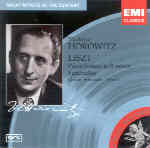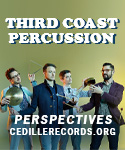The early Vladimir Horowitz HMV recordings selected for EMI’s Great Artists of the Century series have had umpteen CD incarnations, legitimate and otherwise. Despite a general lack of surface noise characterizing EMI’s most recent digital transfers from what I assume to be “inside” source material, I frankly prefer the added overtones and timbral bloom Bryan Crimp effects in his noisier (and more expensive) remasterings for APR. And in a few instances, Andante’s transfers from commercial shellac pressings yield more vivid and vibrant results (Debussy’s Etude No. 11, for instance).
I have no qualms, however, concerning the young Horowitz. What’s so interesting about the legendary pianist’s 1932 Liszt Sonata is how its breathtaking clarity, headlong sweep, and uncluttered directness foreshadow aspects of modern Liszt playing while retaining plenty of “old school” color and drama. Moreover, close listening reveals that Horowitz usually obtains bravura results less through technical calculation than simply by playing the music as written, which was not always true of his older self.
The octaves in the Quasi Adagio section, for example, sound positively jolting and urgent in strict tempo (the same observation applies to the same composer’s famous central octave section in Funérailles, and to the final descending octaves of Chopin’s “Black Key” Etude). At the same time, Horowitz spins out lyrical passages with heartfelt eloquence and an unerring sense of proportion, while his carefully contoured bass lines and inner voices reinforce Liszt’s extraordinary harmonic tension. And notwithstanding occasional finger slips in the heat of battle, note the amazing accuracy of Horowitz’s leaping chords, or the pinpointed control of his rapid figurations, achieved with little help from the sustain pedal.
Compared to Horowitz’s Chopin Mazurka interpretations from the late 1940s, his earlier traversals are less garishly detailed and darkly lit. However, the Schumann Arabeske seems relatively matter-of-fact next to the pianist’s delicately nuanced 1962 remake. The Debussy Etude’s prismatic textures and rhythmic definition sacrifice nothing in impressionistic atmosphere, muffled transfer and all. Bryce Morrison’s booklet notes perceptively zero in on the qualities that made Horowitz a key figure in the history of his instrument. [9/19/2005]
































